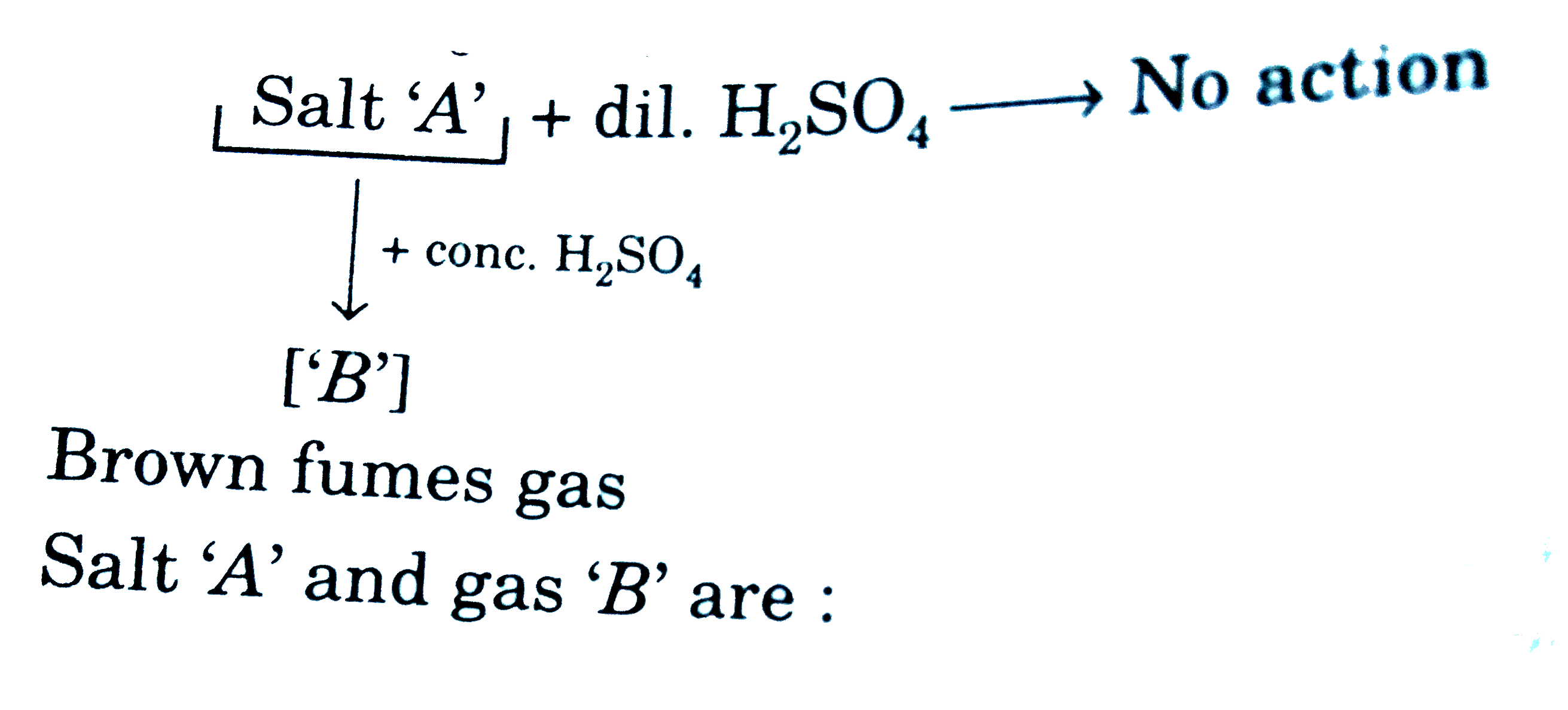A white salt on heating decompose to give brown fumes and a residue is left behind. i. Name the salt. ii. Write the equation for the decomposition reaction.
i. Given white salt is lead nitrate.ii. Thermal decomposition of lead nitrate:
Related Solutions
A White salt upon heating decomposes to give brown fumes and a residue is left behind.
(i) Name the salt.
(ii) Write the equation for the decomposition reaction.View SolutionA White salt upon heating decomposes to give brown fumes and a residue is left behind.
(i) Name the salt.
(ii) Write the equation for the decomposition reaction.View SolutionName the white salt that decomposes on heating to produce brown fumes with a residue.
View SolutionA green salt on heating decomposes to produce a colourless suffocating gas and leaves behind a reddish brown residue. Name the salt and write the decomposition reaction.
View SolutionA colourless lead salt, when heated , produces a yellow residue and brown fumes. (a) Name the lead salt. (b) Name the brown fumes. (c) Write a chemical equation of the reaction involved.
View Solution(a) Explain why : respiration is an exothermic reaction (b) A colourless lead salt when heated produces a yellow residuces a yellow residue and brown fumes. (i) Name the lead salt (ii) Name the brown fumes (iii) What the chemical equation for the reaction involved ?
View SolutionWhen a colorless lead salt is heated it produces a yellowish residue and brown fumes. It is lead salt.
View SolutionA hydrated metallic salt A, light green in colour, on careful heating gives a white anhydrous residue B. Aqueous solution of B reacts with NO to give a dark brown compound C. On strong heating, B decomposes to give a brown residue D and a mixture of two gases E and F. Identify E and F.
View SolutionSalt (A) is a white deliquescent solid. On heating the solid, brown fumes were evolved. On adding NaOH to the salt solution of (A), a white gelatinous ppt. was obtained. On adding, a drop of blue litmus solution to the ppt., a blue lake was obtained. On adding DPA to the salt solution, a deep blue colouration was obtained. Identify the salt and give the equations involved.
View SolutionSalt (A) is a white deliquescent solid. On heating the solid, brown fumes were evolved. On adding NaOH to the salt solution of (A), a white gelatinous ppt. was obtained. On adding, a drop of blue litmus solution to the ppt., a blue lake was obtained. On adding DPA to the salt solution, a deep blue colouration was obtained. Identify the salt and give the equations involved.
View SolutionWhen conc. is added to a chloride salt, white fumes are evolved but in the case of iodide salts brown fumes are evolved . This is because -
View Solution
Brown fumes gas
Salt 'A' and gas 'B' are:View SolutionName the brown fumes liberated when lead nitrate is heated. Write the balanced chemical equation for this reaction.
View SolutionName the brown fumes liberated when lead nitrate is heated. Write the balanced chemical equation for this reaction.
View SolutionName the brown fumes liberated when lead nitrate is heated. Write the balanced chemical equation for this reaction.
View SolutionWhen a white crystalline solid is heated strongly, it decomposes to gives a yellow residue, reddish brown gas, and rekindles a glowing splinter. Identify the reddish - brown gas.
View SolutionThe salt on heating does not give brown coloured gas is:
View SolutionA salt on reaction with dil. gives a reddish brown gas. The salt is
View SolutionAdding concentrated H_2SO_4 to chloride salts gives off white smoke but in the case of iodide salts, purple fumes are emitted because-
View SolutionAn inorganic salt is strongly heated. The residue is yellow when hot and white when cold. The salt contains:
View Solution
